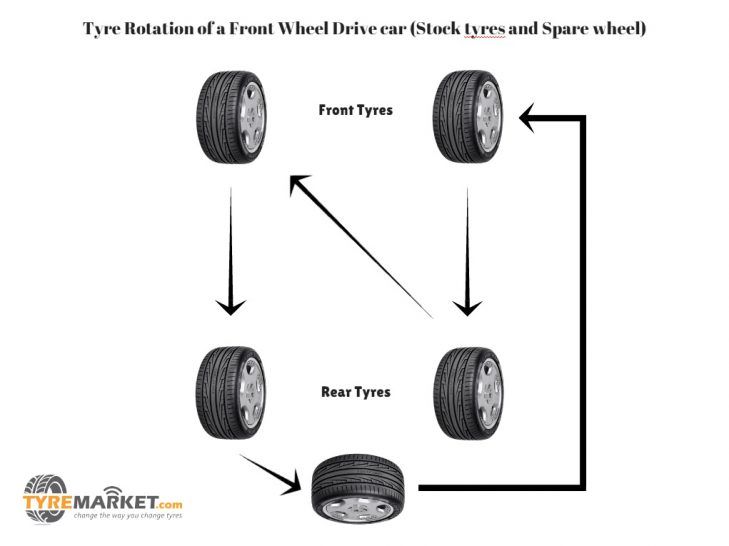Typically, an oil and filter change using conventional oil will cost between $35 and $75, depending on your area. If your car requires synthetic oil, you should expect to pay more (anywhere from $65 to $125) but you make up some of the cost, since synthetic oil lasts longer and has to be changed less frequently.
Some people are handy and have the time and tools to replace their own oil and filter. (If that’s not you – no problem!) Five quarts of conventional oil and a new filter will set you back around $30 depending on where you live. For synthetic motor oil and a new filter, it’ll cost around $45 plus tax. Consult your local auto parts store for actual prices.
Regular maintenance won’t just keep your car running well, it’ll help protect your car’s value over time. For more ways to do this, see How to Maintain the Value of Your Car
During an oil change, the technician will remove the drain plug from the bottom of the oil pan and gravity does its thing: the oil drains out completely into a catch pan so it can be properly discarded. Note: If you’re changing your oil yourself, never dump your oil randomly! From there, the technician will replace the drain plug, change the oil filter and fill the engine with the correct amount of oil. (Most engines take about 5 quarts.)
It’s worth noting that, although an oil change is a simple service, it often makes sense to go to the dealer. Nobody knows your vehicle better than your local dealership service department. Not only have they undergone specific training about your car, truck or SUV, they’re in the best position to advise you about other repairs, maintenance items and even open safety recalls affecting your vehicle.
Different types of oil changes can include a basic, standard, synthetic blend, full synthetic, and high mileage service. It depends on how old your vehicle is, the state of the oil, and when last you had it changed. Some oil change service centers may check your fluid levels during an oil change.
A full service oil change will generally include a filter and oil replacement, which could be conventional, high-mileage, synthetic blend, or 100% synthetic oil.
Stay in car oil changes are becoming more popular as they are convenient and quick. With this type of service, a technician will change your oil without you having to leave your car.
In the “old days”, experts recommended changing conventional oil and oil filters every 3,000 miles. Some people still have that stuck in their mind as a guideline, so if it gives you peace of mind to visit the dealer every few months, go for it! But today’s newer-tech engines often use synthetic-blend oil or full synthetic oil and are engineered to go anywhere from 7,500 to 15,000 miles between oil changes. Yes, synthetic oil changes cost more than conventional ones, but you’re also changing the oil less often. Of course, always follow your manufacturer’s recommended service interval. Not every engine needs synthetic oil.
Of course, always follow your manufacturer’s recommended service interval. Not every engine needs synthetic oil.
Something else that can affect how often you need to change your oil is where you live and how you drive. If you drive like the little old lady (from Pasadena or otherwise), the recommended interval is probably just fine. But if you live in the desert (or in an especially icy location) or tow a trailer often or do a lot of stop-and-go driving, you’re operating under severe driving conditions and might need to change your oil more often. As usual, your owner’s manual can tell you more. For more info about caring for your car long-term, see Top 10 Car Care Tips.
The Service Engine Soon light is an indicator that something is wrong with your engine. It could be something as simple as needing an oil change, or it could be a more serious issue.
To know what type of oil your engine needs, just consult your owner’s manual. It will tell you the type and grade of oil, plus how often you should change your engine’s oil. Or, as another source, some vehicles have this information printed right on a label inside the driver’s door jamb.
It will tell you the type and grade of oil, plus how often you should change your engine’s oil. Or, as another source, some vehicles have this information printed right on a label inside the driver’s door jamb.
You’ve probably seen banners and ads for an oil change “in 30 minutes or less”. And while this may be true in ideal conditions, plan on about an hour for the service to be complete and for you to be on your way.
The good news is that most service center waiting rooms these days have wifi, coffee, comfortable chairs, maybe even snacks. Your wait will be over in no time.
There are benefits to both taking your car to a quick lube and taking it into a dealership for service. Quick lubes are typically less expensive and can get the job done quickly. However, you may not get the same level of service or attention to detail as you would at a dealership. Dealerships are more expensive but you can be sure that your car is in good hands. It’s important to weigh the pros and cons of both before making a decision.
Dealerships are more expensive but you can be sure that your car is in good hands. It’s important to weigh the pros and cons of both before making a decision.
Yes, there are several companies that offer walk-in oil change services. This can be a convenient option if you don’t have time to schedule an appointment or if you are suddenly in need of an oil change.
No. All-electric vehicles have no oil in their electric motor and, therefore, do not need an oil change. However, hybrids – even plug-in hybrids – have a conventional engine in addition to the electric power plant, so they need a periodic oil change. Your car’s manufacturer site or your owner’s manual can give you more information.
At Jiffy Lube you can maintain your tires by rotating them at an average cost of $40. This is an approximation because Jiffy Lube rotation costs vary depending on location. Though $40 might be a little high than you expected for a tire rotation it is around the average price for a tire rotation. However, you do save a lot of time getting your tires rotated while at the same time getting your oil serviced.
Though $40 might be a little high than you expected for a tire rotation it is around the average price for a tire rotation. However, you do save a lot of time getting your tires rotated while at the same time getting your oil serviced.
What's In This Guide?
Primarily Jiffy Lube provides an oil changing service, but they do take care of some other vehicle maintenance needs. Along with changing filters, brakes, and other fluids, Jiffy Lube can also rotate your tires.
Typically, they will charge around $40 to rotate your tires. This price does fluctuate a little from Jiffy Lube to Jiffy Lube, which is largely due to the average income rate in different areas and states. Though you can get your tire rotated for much cheaper at a place like Walmart, you do save a lot of time by doing one-stop for all your maintenance needs.
Though you can get your tire rotated for much cheaper at a place like Walmart, you do save a lot of time by doing one-stop for all your maintenance needs.
You might be wondering what a tire rotation is and why you should be paying $40 for it. Well, a tire rotation is simply swapping the wheels of your vehicle around. In most cases, the front wheels will be swapped with the rear wheels and there will often be some kind of left to right switch involved as well.
Why Should You Get Your Tires Rotated?It is important to rotate your tires so that they can wear evenly. Because different wheels have different jobs depending on where they are on your vehicle, they experience different levels of stress. For example, the front tires are going to experience far more wear than the rear tires.
Because the front tires are used for turning, they have increased edge wear which rounds the tire out.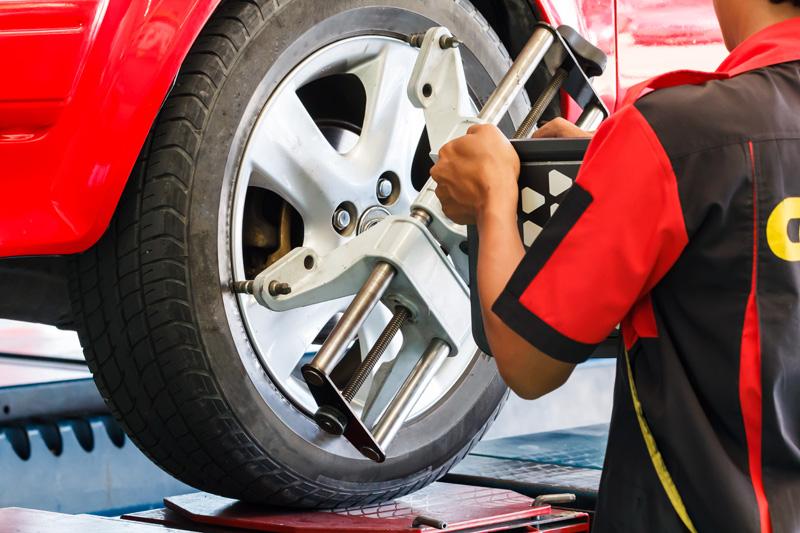 If not rotated; the tires will become a completely different shape compared to the rear tires which will retain a flatter tread shape.
If not rotated; the tires will become a completely different shape compared to the rear tires which will retain a flatter tread shape.
Furthermore, most vehicles have a higher braking percentage in the front. Once again, the front tires are working harder because they are doing more work to slow the vehicle down. The percentage on most front-wheel-drive vehicles is around 80% front braking to 20% rear braking.
Additionally, whichever tire has more weight will experience more wear. These are once again, usually the front tires as that is where the engine is and where the majority of passengers are. Furthermore, the driver’s side tire will wear more because most often the driver is the sole occupant in the vehicle.
Finally, the drive of your vehicle will affect the wear of your tires. Whichever wheel is used to deliver the power from your engine to the road will experience more degradation than the non-driving tires. Most of the time these will also be the front wheels.
Rotating your tires allows all of them to experience the same amount of wear which dramatically increases their overall life span. Additionally, they wear more evenly, also increasing their usability by a substantial amount.
How Often Should You Get Your Tires Rotated?On average you want to get your tires rotated every 5,000 to 7,500 miles, depending on your driving habits. If you tend to accelerate quickly and brake hard then lean toward a shorter rotation cycle. Fortunately, 5,000 to 7,500 miles coincides with most vehicles’ recommended oil change cycle.
This gives you the perfect excuse to get both your oil changed and your tires rotated at a Jiffy Lube at the same time. There are however two exceptions to this rule, however. With modern full-synthetic oil, a vehicle’s oil change interval may be double that of conventional motor oil.
A full-synthetic engine may only need an oil change every 15,000 miles. This is good for the budget because you need to buy less oil over a vehicle’s lifetime, but it does mean you would need to rotate the tires more often than getting an oil change.
Additionally, four-wheel drive (4WD) and all-wheel drive (AWD) vehicles need tire rotations more often for the best outcome. On average a 4WD or AWD vehicle should have its tires rotated between 3,000 and 5,000 miles. Again, throwing out the balance between oil changes and tire rotations.
Can You Do Your Own Tire Rotation?You can definitely perform your own tire rotation and your
vehicle most likely came with all the tools you need. The bare minimum you will
need is a lug wrench to remove and reinstall your lug nuts and a car jack, all
of which your vehicle should have.
There are different tire rotation patterns so make sure to consult your vehicle’s user manual for the right pattern. Also confirm that you do not have directional or staggered tires, as these will limit your tire rotation pattern options. Directional tires can only be rotated back to front while staggered tires can only be rotated left to right.
ConclusionFor the most part, Jiffy Lube will charge you around $40 to
rotate your tires. This is more expensive than other places but will save you
This is more expensive than other places but will save you
some time because you don’t need to visit multiple locations to get tires
rotated and your oil changed.
Keep in mind that Jiffy Lube likes to look for extra work.
They will most likely offer to change any other filters and try to find
something that is wrong with your vehicle. Filter changes are good for your
vehicle, but Jiffy Lube may recommend a new filter when one is not yet needed.
The optimum time to change tires seasonally differs from year to year due to quirks of the weather. And this is normal even for one city - what can we say about different regions, where ideas about winter and summer can differ significantly.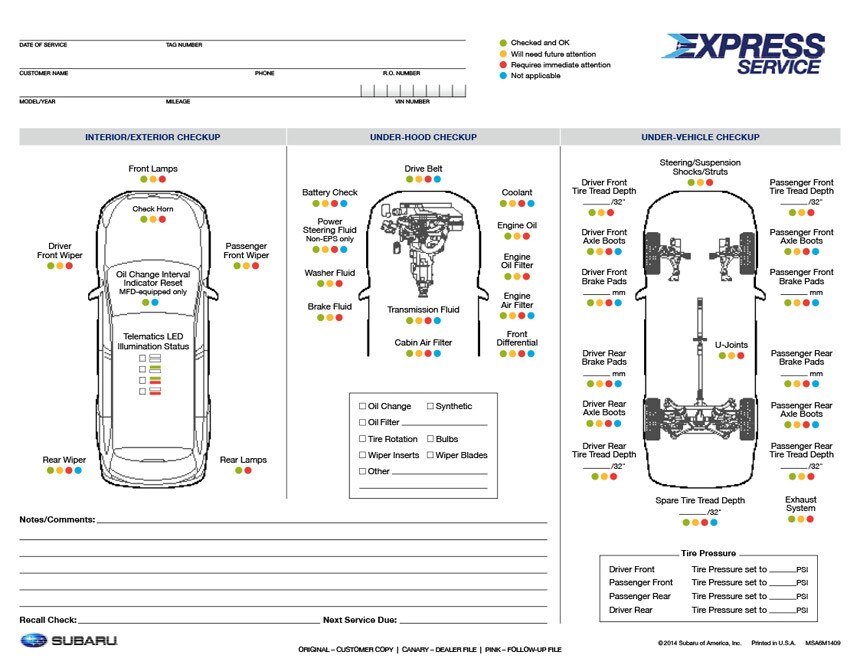 Therefore, legislative initiatives on forced seasonal “changing of shoes” of cars in strictly defined months look rather strange: nature will still make adjustments.
Therefore, legislative initiatives on forced seasonal “changing of shoes” of cars in strictly defined months look rather strange: nature will still make adjustments.
Here, an analogy with public utilities is appropriate, who start and end the heating season not according to the calendar, but when a certain average daily air temperature is reached - that is, based on the objective readings of the thermometer. The same approach should be followed by motorists when choosing the time to change tires.
At what temperature should tires be changed? Manufacturers believe that +7 degrees Celsius is the optimal moment for seasonal “changing shoes”. At this point, the graphs of grip levels for winter and summer tires converge: at temperatures above +7°C, winter tires work inefficiently and wear out quickly. And at lower temperatures, the performance of already summer tires drops.
But this graph reflects the properties of some average tires. In reality, the composition of the rubber compound for different tires is significantly different. The same winter tires can be both soft "Scandinavian" (hardness 50-55 Shore units), and "Central European", with a hardness of 60-65 units. Obviously, their indicators are very different: the first ones will “float” even with a small plus, the second ones will work tolerably even at +10°C.
The same winter tires can be both soft "Scandinavian" (hardness 50-55 Shore units), and "Central European", with a hardness of 60-65 units. Obviously, their indicators are very different: the first ones will “float” even with a small plus, the second ones will work tolerably even at +10°C.
Read more: Which tires are best? Scandinavian, European, studded
The choice of temperature is also somewhat arbitrary. In a sharply continental climate, it can be +7 during the day, and -3 at night, and in the morning you will be met by a dangerous ice film on the road. Therefore, it is better to be guided by logic: switch to summer tires when there is no chance of encountering ice on the road. That is, if during the day the thermometer does not go into minus, and the long-term weather forecast does not promise a cold snap. And vice versa, put winter tires before the onset of "near zero" temperatures and the first frosts that threaten to turn puddles into ice.
But still, it is the temperature, and not the presence of precipitation, that is the key signal to change tires.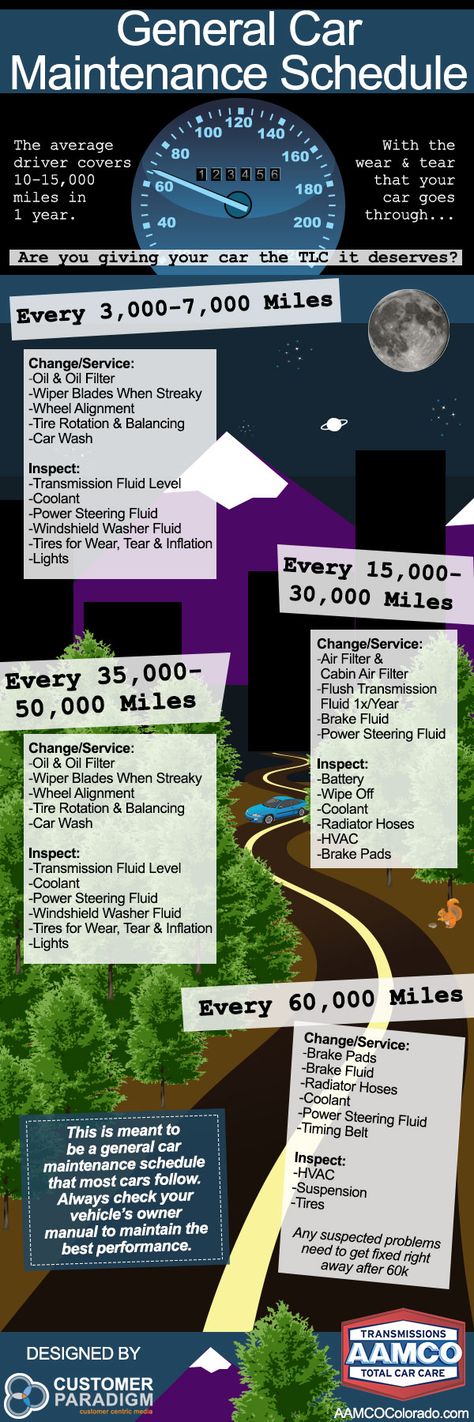 For example, at -5°C, summer tires are ineffective even on absolutely dry pavement. And when the temperature rises from +4 to +11°C (just in the region of "transitional" +7°C), the braking distance on winter tires increases by half a meter at once. With a further increase in temperature, winter tires are losing on braking to summer tires for several car bodies. Therefore, driving on winter tires in summer is very fraught.
For example, at -5°C, summer tires are ineffective even on absolutely dry pavement. And when the temperature rises from +4 to +11°C (just in the region of "transitional" +7°C), the braking distance on winter tires increases by half a meter at once. With a further increase in temperature, winter tires are losing on braking to summer tires for several car bodies. Therefore, driving on winter tires in summer is very fraught.
Read more: To inform or change shoes? Do I need to change winter tires for summer ones in summer
If you have bought a new set of tires, you can immediately start installing it. But old tires that have been waiting in the wings for six months require certain checks.
First of all, make sure the tires are still serviceable. According to the Rules of the Road, the minimum allowable tread depth for passenger car tires is 1.6 mm (summer tires) and 4 mm (winter tires). With a smaller balance, you can no longer ride on tires.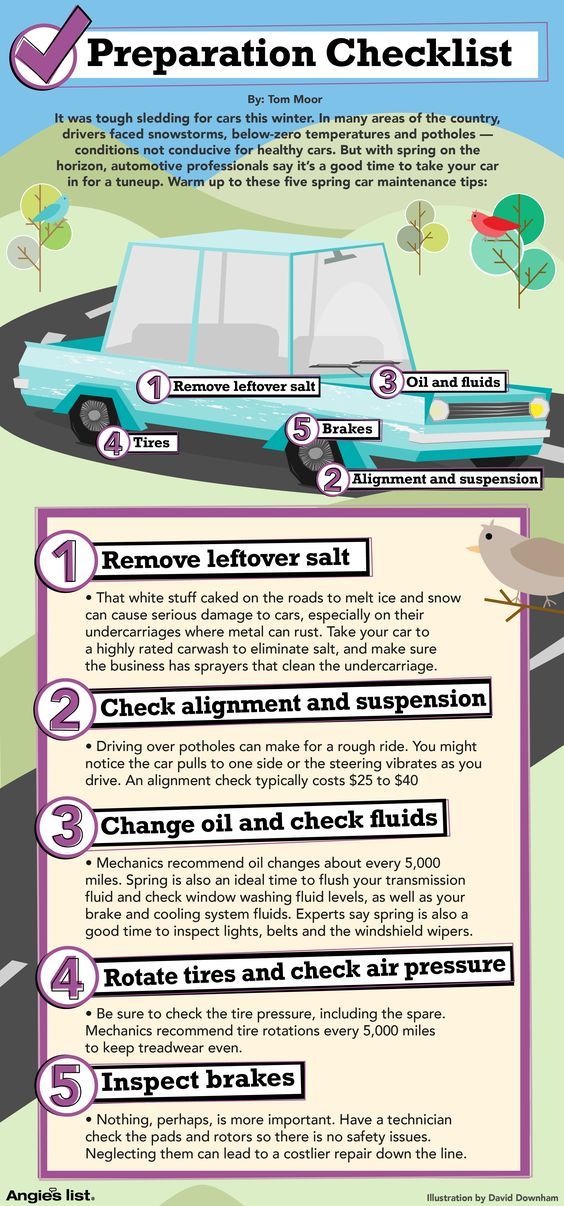
You can measure the remaining tread with a special tool - a caliper. There are also special wheel tread depth gauges, including digital ones.
Another important traffic law requirement for tires: they must be the same (at least on each of the axles). Modern cars equipped with a lot of smart electronics - ABS, directional stability and braking force increase systems - are even sensitive to uneven tire wear, not to mention different sizes or tread patterns. But the dangerous experiments of drivers with the so-called mixed fleet (sets assembled from different tire models) are already a thing of the past.
Also, before installation, you need to visually assess the condition of the tires. When stored for a long time, especially in unsuitable conditions (for example, at high humidity, which is not uncommon in private garages), the rubber may deform, crack or dry out. It is impossible to install tires with such defects: at high speed, any crack in the rubber becomes extremely dangerous and threatens to explode the tire.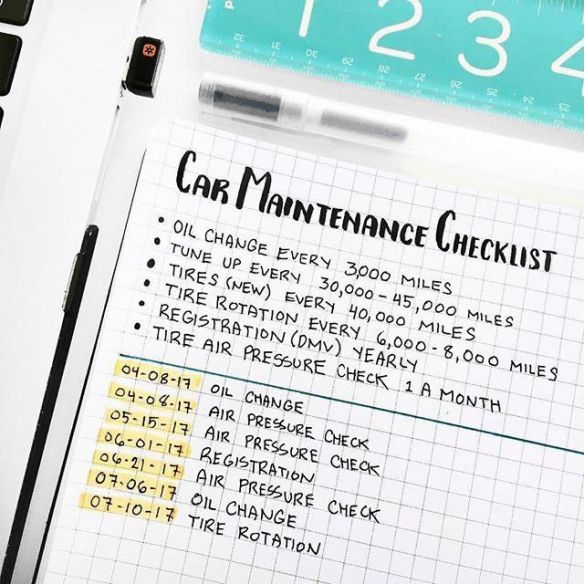
By the way, for seasonal storage of tires, you can use the “tire hotel Hyperauto”, where the correct temperature and humidity are constantly maintained. Hyperauto specialists bear full financial responsibility for the tires, and on the day you have appointed, they themselves bring the wheels for tire fitting, which is very convenient.
In addition to the tread depth and the absence of external defects, before installing the tires, you need to check their uniform wear (the tire should not be “eaten” from one side), as well as age. Natural rubber, from which rubber is made, retains its properties for 5 years from the date of manufacture of the tire. The aging of rubber greatly affects the effectiveness of traction, so it’s not worth driving on old, even if not worn, tires.
When changing tires, do not forget about their periodic rotation - rearrangement, the diagram of which can be found in the instructions for the car. Rearranging the wheels ensures uniform wear, which prolongs the life of the entire set. Standard tire rotation schemes are presented below, but it is better to check the instructions for your particular machine. It is recommended to change tires every 10,000 km.
Standard tire rotation schemes are presented below, but it is better to check the instructions for your particular machine. It is recommended to change tires every 10,000 km.
On rear- and all-wheel drive vehicles, the front tires are moved to the rear axle diagonally (diagram A), or they are changed in a cross pattern (B). On machines with front-wheel drive, the situation is reversed: the rear tires are moved diagonally forward (Diagram C).
Tires with a directional tread pattern cannot be turned without overbeading. To rotate them without removing them from the disks, the front wheels are simply swapped with the rear wheels on each side of the car (Diagram D).
If the car is equipped with a full-size spare tire, not a spare tire, and you bought a set of five new tires, be sure to include the "spare" in the rotation (diagrams E and F), changing the wheels every 10,000 km. This will allow you to use the kit longer and easily replace any of the main ones with a spare wheel in case of damage - their wear will be the same. Thanks to this scheme, buying five tires in the end turns out to be more profitable than four, due to longer operation.
Thanks to this scheme, buying five tires in the end turns out to be more profitable than four, due to longer operation.
To maintain rotation, mark old tires with a colored marker before they are removed from the machine; if you forget about it, then it will be difficult to figure out where which tire was.
In the event that a replacement set of wheels is put on individual discs, check the pressure in them before installing them on the machine. If the tire deflated during storage, look for the reason - the air does not just leave. Under the weight of the car, the air leakage will only intensify, and the next morning after "changing shoes" you will have a flat tire waiting for you if you do not fix it in advance.
Do not forget that the pressure in tires of different sizes may differ - do not inflate the old one, getting used to it in six months. Look for recommended pressures for different tire sizes on a sticker in the doorway.
Read more: Tire pressure. How and why to measure it
Do not forget about the importance of wheel balancing: it ensures uniform rotation, the absence of vibrations on the steering wheel and body, and also saves the life of wheel bearings. Balancing is needed for each wheel of the car, including the spare one, in case of emergency installation on the road, as well as for planned tire rotation.
Even if you use two sets of wheels on different rims, check the balance of each set before installing. During the season, the tire tread wears out (not always evenly), and the installed weights often fall off - as a result, the wheel balance may be disturbed.
Whenever dismantling the wheels, it is worthwhile to carry out an express inspection of the suspension parts, check the condition of the brake hoses and the thickness of the brake pads. In general, it is useful to combine seasonal tire changes with chassis diagnostics: it is better to identify any unpleasant surprises in advance.
After changing tires, be sure to adjust the wheel alignment (“camber”), because winter and summer tires differ in height and tread pattern, degree of wear; often - dimension and pressure. All these factors disrupt the suspension geometry, which can lead to uneven tire wear, increased fuel consumption, uneven steering wheel position, and vehicle pulls to the side.
Read more: Camber and convergence. When and why to adjust wheel alignment
To avoid these problems, it is better to change tires where you can immediately adjust the camber and toe. For example, in Hyperauto car services equipped with separate tire fitting areas.
Wheels must be rotated regularly, following either the instructions in the vehicle's owner's manual or the rules developed by the tire industry. Proper wheel alignment helps to make the longitudinal and lateral wear of the tires more even, as well as improve ride comfort and reduce noise levels.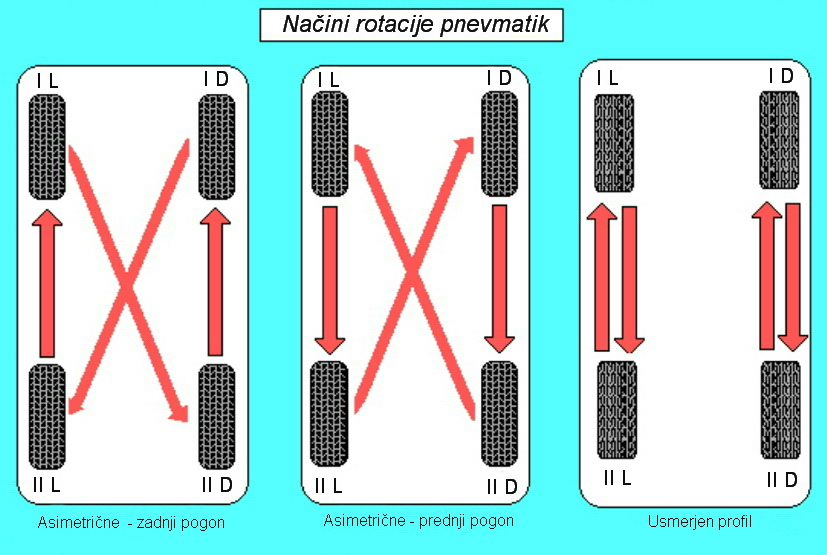 Minimal differences in the longitudinal wear of the tire tread, which may occur after periodic wheel replacement every 5,000 - 8,000 km, do not affect the resistance to aquaplaning, and the wheels can be rearranged further. In this case, any differences in wear actually mean that repositioning should be done at shorter intervals.
Minimal differences in the longitudinal wear of the tire tread, which may occur after periodic wheel replacement every 5,000 - 8,000 km, do not affect the resistance to aquaplaning, and the wheels can be rearranged further. In this case, any differences in wear actually mean that repositioning should be done at shorter intervals.
Swapping wheels is beneficial for several reasons. When performed as recommended, it can improve handling and traction, and reduce uneven wear.
There are warranties that are valid only if the wheels are correctly rotated. Experts recommend changing wheels every 5,000 to 8,000 km, even if there are no signs of wear. Often the shift can be done at the same time as changing the oil while the car is on a lift. This is a good time to check the tires for damage, remove stones and other foreign objects, determine the wear uniformity by measuring the tread depth and, of course, check the pressure level.
The tires on the front axle of the car differ significantly from the tires on the rear axle in terms of tasks performed.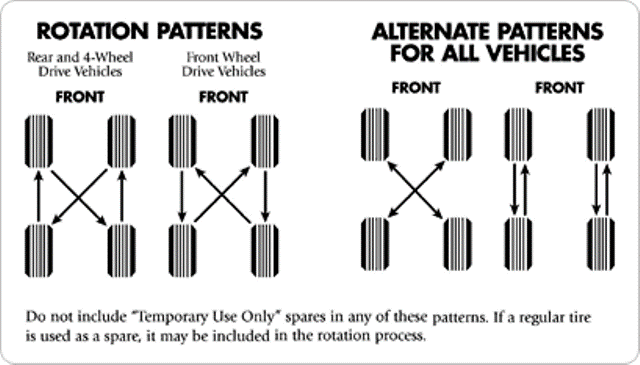 At the same time, tires on a front-wheel drive car operate in significantly different conditions than on a rear-wheel drive car. Whichever wheel the tire is mounted on, there may be different wear types and rates anyway. Therefore, it is best to have all four tires wear equally because when wear reduces tread depth, it allows all four tires to respond faster to steering inputs, maintain handling characteristics, and help improve cornering grip.
At the same time, tires on a front-wheel drive car operate in significantly different conditions than on a rear-wheel drive car. Whichever wheel the tire is mounted on, there may be different wear types and rates anyway. Therefore, it is best to have all four tires wear equally because when wear reduces tread depth, it allows all four tires to respond faster to steering inputs, maintain handling characteristics, and help improve cornering grip.
If all tires wear the same, you can buy a new set instead of buying tires in pairs. If you change the entire set, the original handling characteristics are preserved. In addition, manufacturers are constantly releasing new, improved tire models, and if you put in a new set, you can improve the car's handling, instead of looking for tires of the previous generation
Residents of the northern regions can rearrange the wheels simultaneously with the seasonal change of tires. Drivers who drive an average of 19 per year000 - 24,000 km, two of the three wheel changes will be carried out during the tire change before and after winter.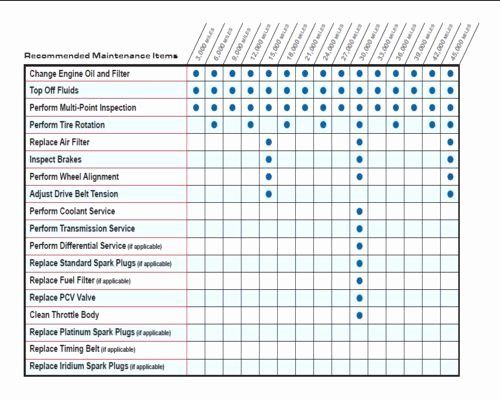 All that remains for them to do is rearrange the wheels again in July.
All that remains for them to do is rearrange the wheels again in July.
How exactly should the wheels be changed? There are three traditional methods suitable for most vehicles (equipped with tires and rims of the same size). The second method can be used as an alternative to the first and third.
Wheel swap diagram:
There are also two additional ways. The fourth method is suitable for cars with the same tire and wheel sizes, and the fifth for cars with different size tires on the front and rear axles.
Although many vehicles are equipped with a spare tire that is smaller than the standard tyre, if the spare tire is the same size as the others, it must be used during the swap. Follow the vehicle manufacturer's instructions, or if they are not available, always fit a spare on the right rear wheel. One of the other tires, according to the diagram, put in the trunk and use as a spare until the next swap.
Regular wheel rotation will ensure uniform wear of all five tires throughout the entire service life.